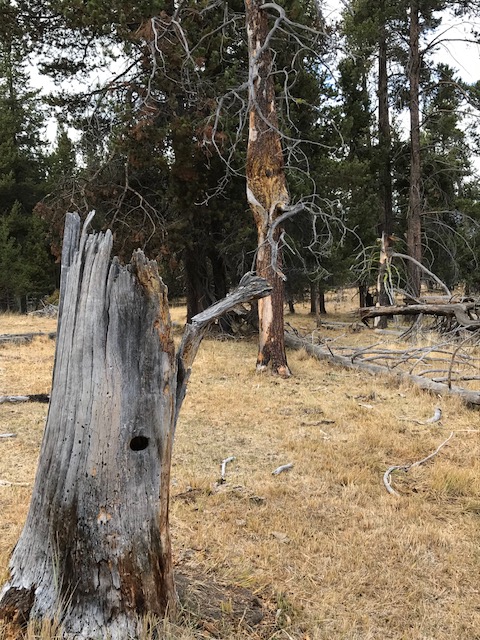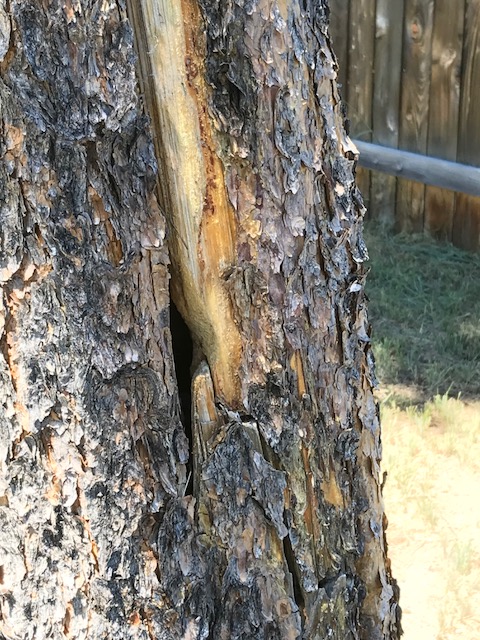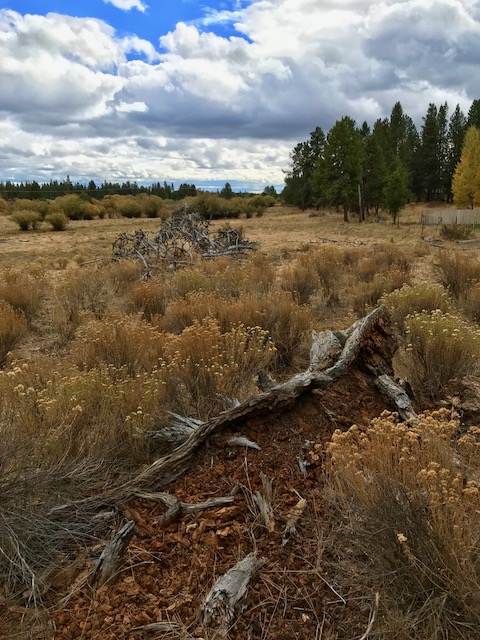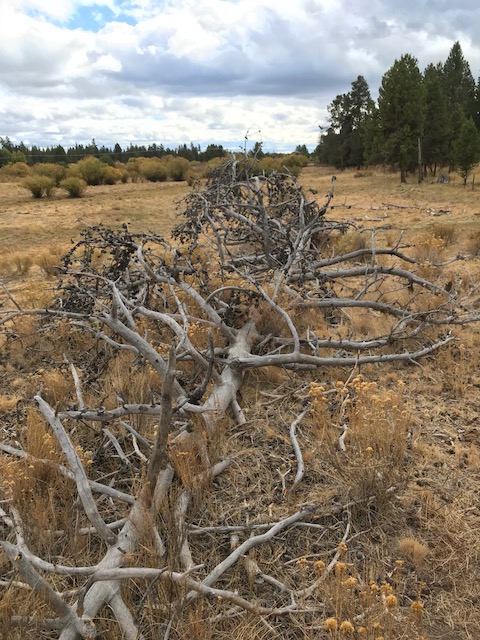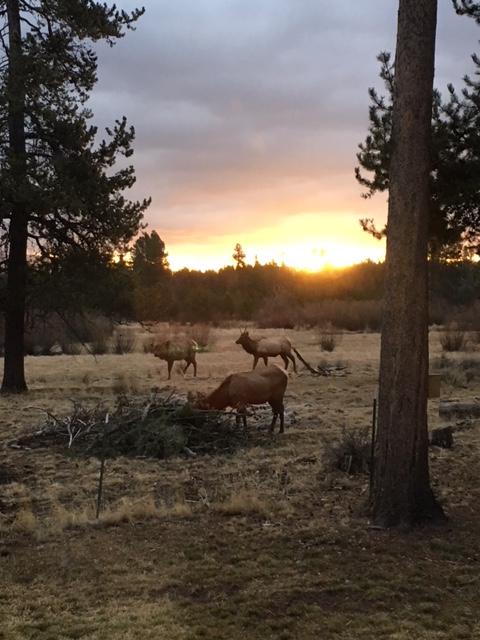My view from the edge of the forest looks out onto both live and dead trees. This natural cycle of life and death is fascinating and a terrific nature study for families who want to see how there is value to a dead tree long after the last leaf has fallen from its branches.
At first glance, a dead tree is just that, a lifeless object that may or may not be attractive from a human standpoint. Our family heats our home with firewood so from a completely practical and human standpoint, the dead tree is valuable as a source of life-giving heat. But, upon closer reflection and my own personal observation, I’ve started to see how a seemingly lifeless tree is far from being lifeless. These trees are actually highly beneficial to enriching a forest habitat, supporting new life and sheltering a variety of other species of creatures and plants.
Taking a closer look, I see now that a dead tree is an important piece of the complex life cycle of my local habitat.
We’ve observed the nuthatches making their nests in the cavities of a dead tree’s trunk. They create a small opening to squeeze into and make a nest deep inside the protective walls of the tree’s bark and trunk. Doing some research, we discovered that about 85 species of birds in North America nest in dying or dead trees.
Behind our house, there’s a tree stump from a long gone tree. It’s toppled over at this point but if you look closely during the summer months, you can see where the ground squirrels go into their tunnel from under the protective shelter of this dead tree stump. We’ve seen them use the stump as an observation spot after they climb up on top of it and then stand on their hind legs as they survey the land.
We have a particular standing dead tree behind our house that nearly always has a bird perched up high in its gnarly branches. I’m sure from up there they have a clear view for hunting their dinner. Or, they can just sit up there and sun themselves.
There’s a downed tree behind our house that we like to sit on and observe the sky and mountains. As we sit, we note there are many insects, including ants that are using the trunk for their home. There are birds that shelter in its branches, and small rodents that are hiding under the trunk. We’ve seen a coyote digging under the trunk and then pouncing on something before moving along. I assume he found a small rodent meal.
Look at the tree trunk and you may see lichen, mushrooms, spider webs, ferns, and new trees growing.
Last autumn we left one of our burn piles with many dead limbs and dead tree branches as a place for critters to shelter over the winter. As anticipated, we spotted birds, squirrels, and elk attracted to the pile.
Our observations have led us to rethink our view of leaving dead trees, snags, and downed limbs as a natural resource for the varied wildlife we coexist with.
Of course, these are away from our house at a safe distance because we do want a defensible space if a fire comes through. They’re at least 100 feet from our house and we have a green space between the dead trees and our backyard. We’ve cleaned up the lower limbs from the trees nearer to the house to give us a clearer view of the landscape. I like to think there’s a safe buffer but we still take into account the importance of saving some of the dying trees for the sake of creating a healthy habitat.
This are affiliate links to products I own and love!


